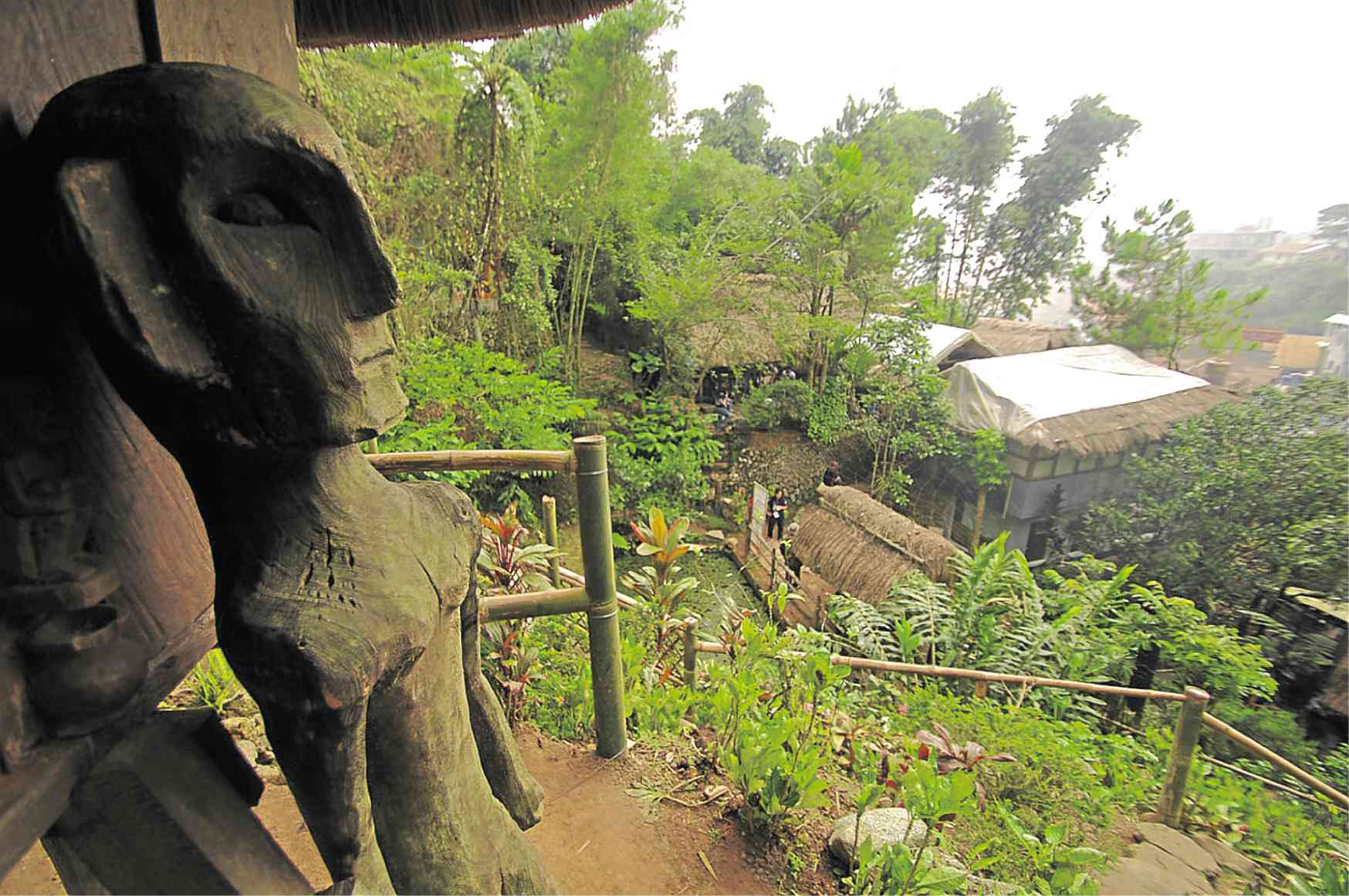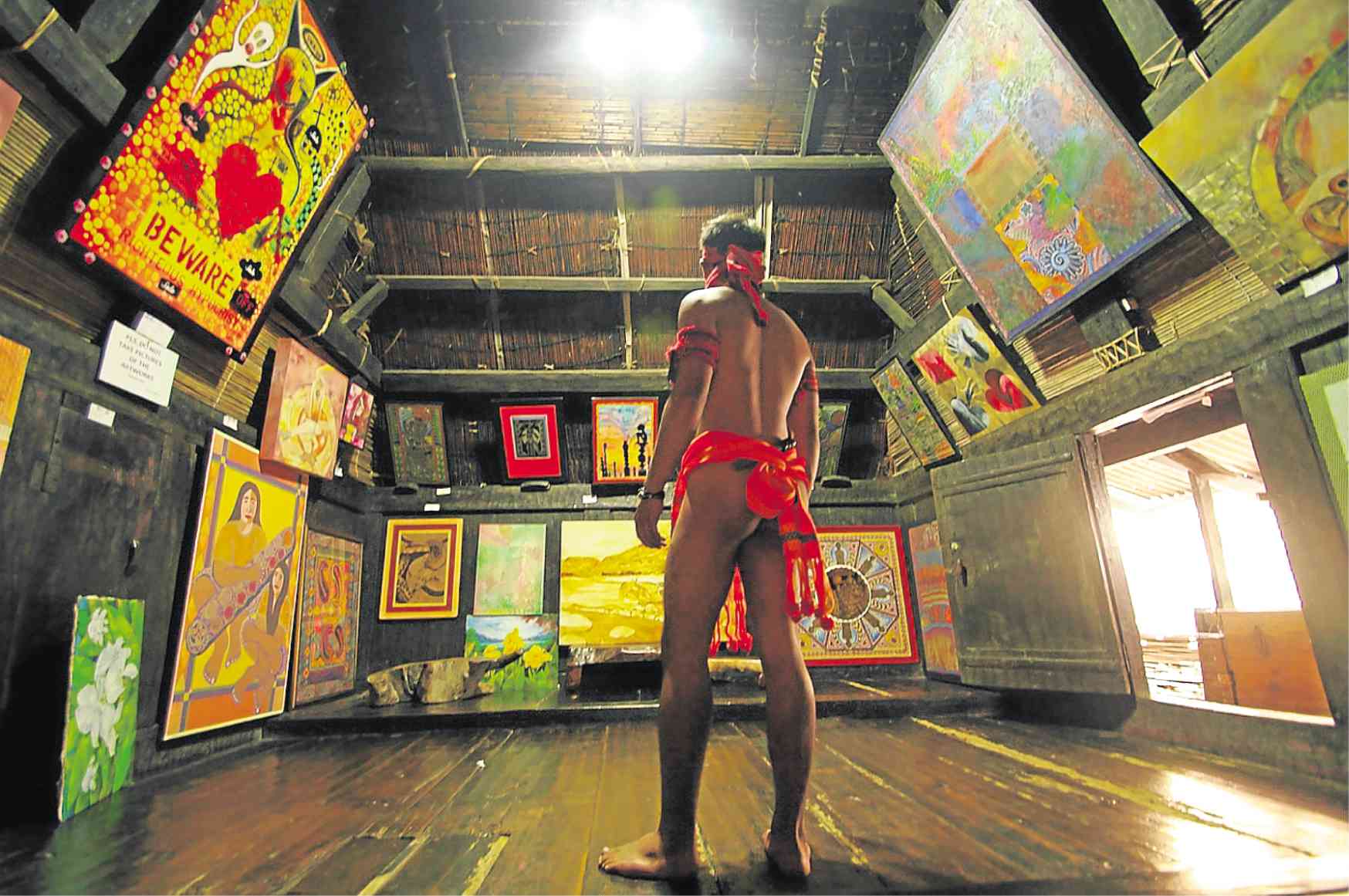Baguio artisans want gov’t support for their craft

ARTISTS’ VILLAGE Tam-awan Village, an art community in Baguio City, has been promoting visual art and traditional craft of the Cordillera people. —PHOTOS BY RICHARD BALONGLONG
BAGUIO CITY, Philippines — Woodcarvers, weavers, silversmiths and the art community here are developing a “Creatives Circuit,” which will guide tourists, clients and students to their galleries, showrooms and work places.
The circuit is part of a plan to highlight and improve the “creative economy,” or trade of artisans and artists which led to Baguio’s induction into the “Creative Cities Network” in 2017, said tourism officer Alec Mapalo.
Baguio is the first Philippine city to join the network composed of 108 global cities that have “industries fueled and driven by creativity.”
The United Nations Educational, Scientific and Cultural Organization (Unesco) included Baguio in the network because of its crafts and folk art.
But Mapalo said the designation was not permanent, and the city government would need to report how it had improved its homegrown trade crafts since 2017.
Article continues after this advertisementArticle continues after this advertisement
Arts, crafts fest
This summer, the city government is hosting an art event for artists and artisans at the former Diplomat Hotel to showcase the city’s arts and crafts.
Baguio has been known for woodcarving brought here by Ifugao migrants, weaving which built a thriving trade for Cordillera women and silversmithing.
The circuit, however, will help bring people to the artists, Mapalo said.
“One of the main concerns among artists is finding people interested in their arts. According to them, people [today] have limited appreciation of art, and those few who expressed willingness to buy their art, tend to devalue it [when the art is traded like a commodity]. The same is true for craftsmen,” said a study on Baguio’s creative community that was undertaken by the University of the Philippines Baguio and the Asian Institute of Management.
The study profiled artists and artisans, and found that most of them operate as informal enterprises. Many artisans believe they do not need to register their businesses because of the “irregular nature of their work and income,” the study said.

NATIVE SPACE An Ifugao hut serves as an exhibition space for local artists at Tam-awan Village in the summer capital.
Sustainability
Although many wood and handicraft makers work alone, some artisans or weaving associations surveyed by the study said that they have employed as many as 800 people, proving the existence of a “creative economy” in Baguio.
“Three [Baguio] districts serve as centers for specific industries. Quirino Hill is a hub for organized household weavers, while the district hosting the Tam-awan Art Village is where visual artists huddle. Asin Road is where woodcrafters thrive,” the study said.
But almost all of the craftsmen and artists who were surveyed admitted they have problems sustaining their work.
Traditional woodcarvers have been worried about strict environmental regulations that prevent them from accessing wood.
“The depletion of forests in the Cordillera further exacerbates the shortage of wood … Many complain about the inefficient and tedious process of obtaining permits before they can cut trees and transport wood,” the study said.
The city’s weaving and knitting industries are too small and too informally organized to be eligible for loans so they could upgrade their equipment and increase the volume of their products.
Livelihood
“Most of the artists rely on their art as their main source of livelihood. With the nature of their work, income is considered unstable,” the study said.
Artists also complained about the absence of “dedicated space to showcase their works.” Their works are often displayed at coffee shops, apartment buildings, bookstores and restaurants which serve as makeshift galleries.